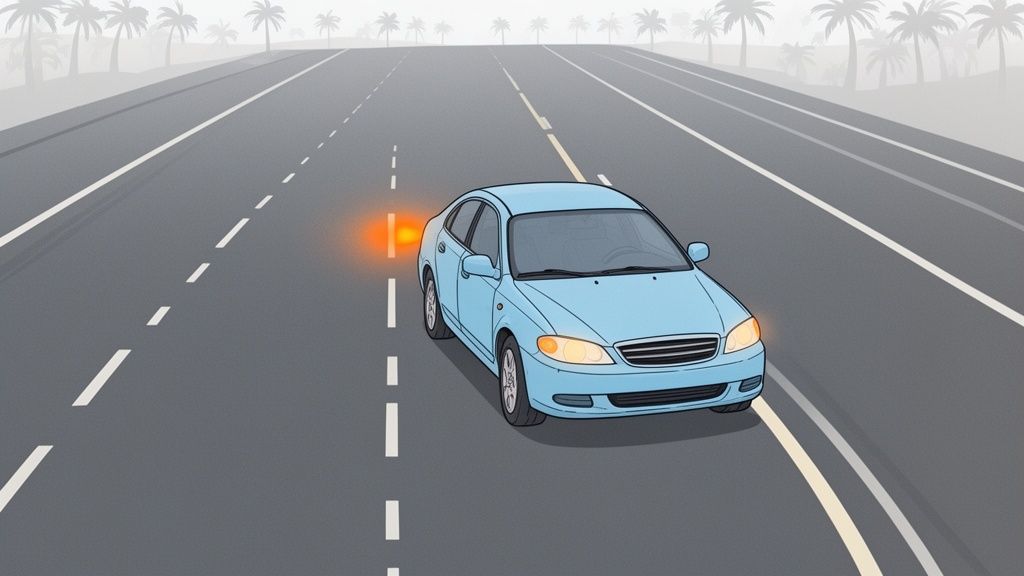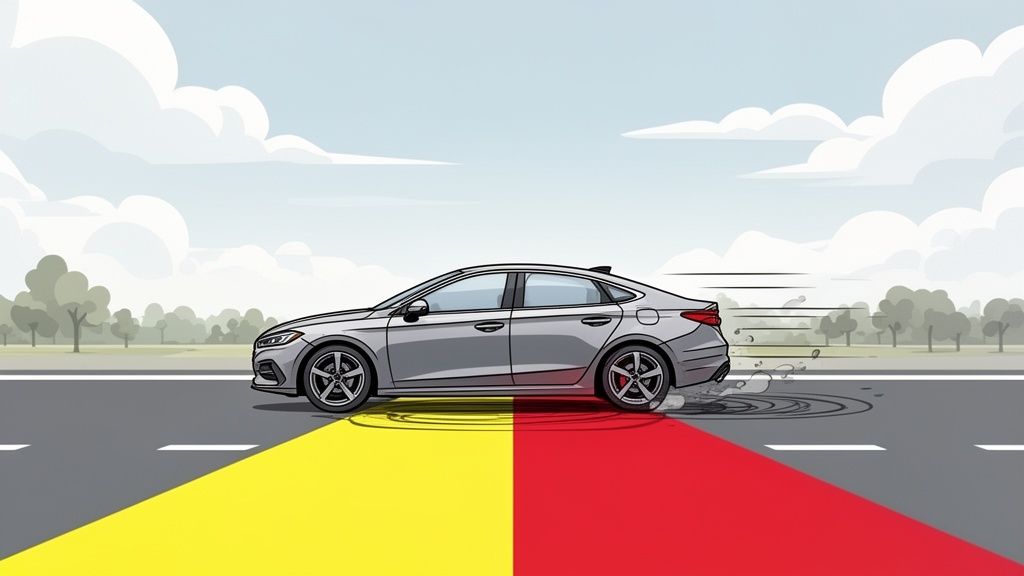Defensive driving techniques are essential skills that can save lives on the road. At DriverEducators.com, we believe mastering these techniques is crucial for every driver’s safety and well-being.
In this post, we’ll explore key strategies to help you become a more vigilant and responsible driver. By implementing these methods, you’ll not only reduce your risk of accidents but also potentially lower your insurance premiums.
Why Defensive Driving Matters
The Power of Proactive Road Safety
Defensive driving transcends mere buzzwords; it represents a life-saving approach to road navigation. This mindset empowers drivers to anticipate potential hazards and take proactive measures to avoid them. Such an approach dramatically reduces the risk of traffic accidents.
Human Error and Accident Prevention
The belief that human error causes 94% of crashes is actually a myth. However, defensive driving techniques actively work to minimize errors on the road. For example, drivers who maintain a safe following distance allow themselves more time to react to sudden stops or obstacles. This simple practice prevents many rear-end collisions.
Protecting Lives on the Road
Defensive driving protects more than just the individual driver; it safeguards everyone on the road. Motor vehicle crashes are a leading cause of death among people aged 1-54 in the United States. Drivers who adopt defensive techniques contribute to a safer road environment for all users, including pedestrians and cyclists. These actions prevent injuries and save lives.
Financial Advantages of Safe Driving
Safe driving habits lead to significant financial benefits. Many insurance companies offer discounts to drivers who complete accredited defensive driving courses. Moreover, drivers who avoid accidents and traffic violations face lower insurance premiums and avoid costly legal fees.
Transforming the Driving Experience
Mastery of defensive driving techniques transforms a person’s driving experience. Drivers report increased confidence and control on the road, which leads to a more enjoyable and stress-free journey. Defensive driving extends beyond rule-following; it cultivates a mindset that prioritizes safety for oneself and others on the road.
As we move forward, let’s explore the essential techniques that form the foundation of defensive driving. These skills will equip you with the tools to navigate any road situation with confidence and safety.
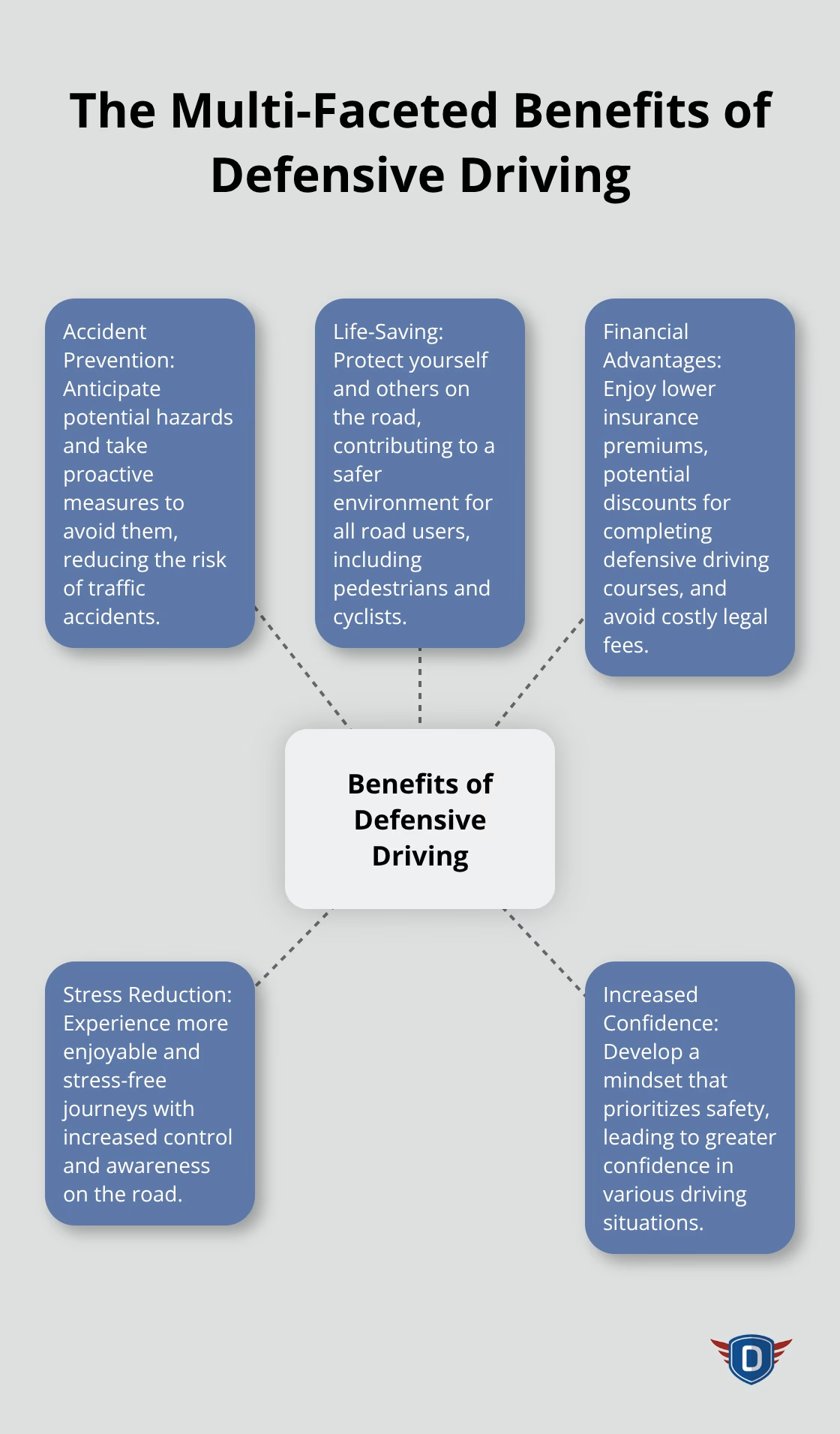
How to Drive Defensively
Defensive driving involves more than following traffic rules. It requires active accident prevention and road safety. This chapter explores key techniques to improve your driving skills and keep you safe on the road.
The Three-Second Rule
One effective defensive driving technique maintains a safe following distance. The three-second rule helps prevent rear-end collisions by minding the distance between your car and other cars on the road. Here’s how it works:
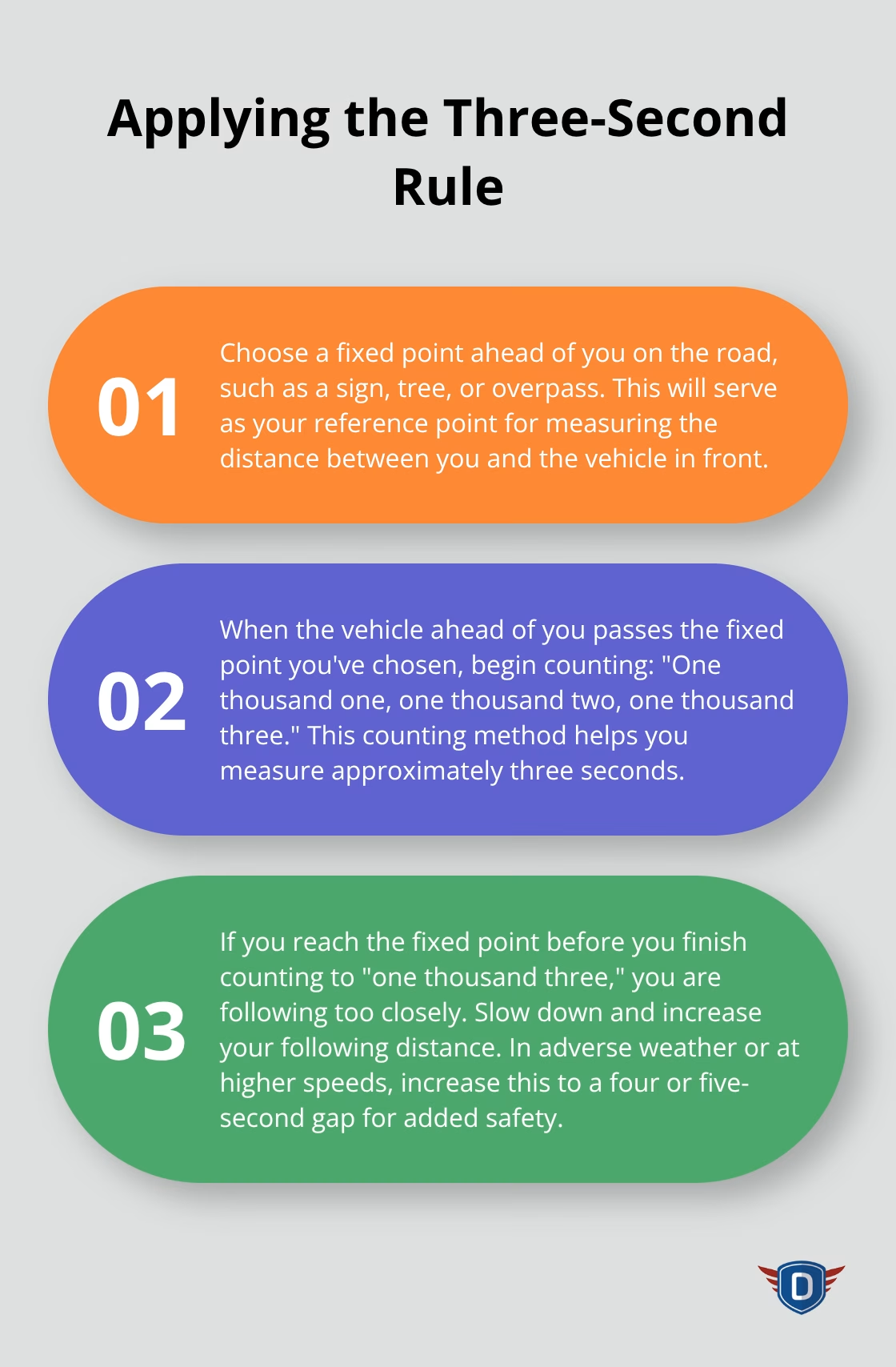
In adverse weather conditions or when driving at higher speeds, increase this to a four or five-second gap. This extra space provides more time to react to sudden changes in traffic flow.
360-Degree Awareness
Constant scanning of your surroundings allows you to anticipate potential hazards. Continuous improvement in scanning skills proves essential for maintaining and enhancing defensive driving abilities. Check your mirrors every 5-8 seconds. This practice helps you stay aware of vehicles in your blind spots and those approaching from behind.
Don’t forget to look far ahead down the road. Try to scan at least 12-15 seconds ahead of your current position. This allows you to spot potential issues early, giving you ample time to react safely.
Proactive Hazard Recognition
Anticipating potential hazards improves with practice. Some common scenarios to watch out for include:
- Children playing near the street who might suddenly run out
- Vehicles with erratic driving patterns that could indicate a distracted or impaired driver
- Debris on the road that could cause damage or force sudden lane changes
Early identification of these situations allows you to adjust your speed and position to avoid potential accidents.
Clear Communication on the Road
Using your turn signals and checking blind spots form the foundation of safe driving. Always signal your intentions at least 100 feet before turning or changing lanes. This gives other drivers time to react to your movements.
When changing lanes, use the SMOG technique:S – Signal your intentionM – check your MirrorsO – look Over your shoulder to check blind spotsG – Go when it’s safe
Weather-Appropriate Driving
Adjusting your speed for weather and road conditions proves critical. In rain, reduce your speed by at least 5-10 mph and increase your following distance. On snowy or icy roads, cut your speed in half and maintain at least a 10-second following distance.
Posted speed limits apply to ideal conditions. You must adjust your speed based on current road conditions.
Mastering these defensive driving techniques significantly reduces your risk of accidents and creates a safer environment for everyone on the road. (Many driving schools, including DriverEducators.com, emphasize these skills in their courses.) The next chapter will explore advanced defensive driving strategies to further enhance your skills and confidence on the road.
Elevating Your Defensive Driving Skills
Perfect Smooth Vehicle Control
Smooth braking and acceleration form the foundation of advanced defensive driving. Gradual, controlled movements reduce vehicle wear and provide better traction, especially in adverse conditions. Practice gentle application of the accelerator and brake pedal to achieve seamless transitions. This technique helps maintain a consistent speed, reducing the likelihood of rear-end collisions.
For optimal steering control, use the push-pull technique. Place your hands at 9 and 3 o’clock on the steering wheel. As you turn, push up with one hand and pull down with the other, never crossing your arms. This method provides maximum control and allows for quick adjustments when necessary.
Master Escape Maneuvers
The ability to escape potential collisions is essential. The quick lane change is a vital skill. To execute this maneuver:
- Check your mirrors and blind spots quickly.
- Turn the steering wheel sharply in the desired direction.
- Countersteer to straighten out in the new lane.
- Adjust your speed to match surrounding traffic.
Practice this technique in a safe environment (such as an empty parking lot) to build muscle memory for emergencies.
Combat Driver Fatigue
Fatigue poses a significant danger on the roads. Drowsy driving crashes led to an estimated 50,000 people injured and nearly 800 deaths. To manage fatigue:
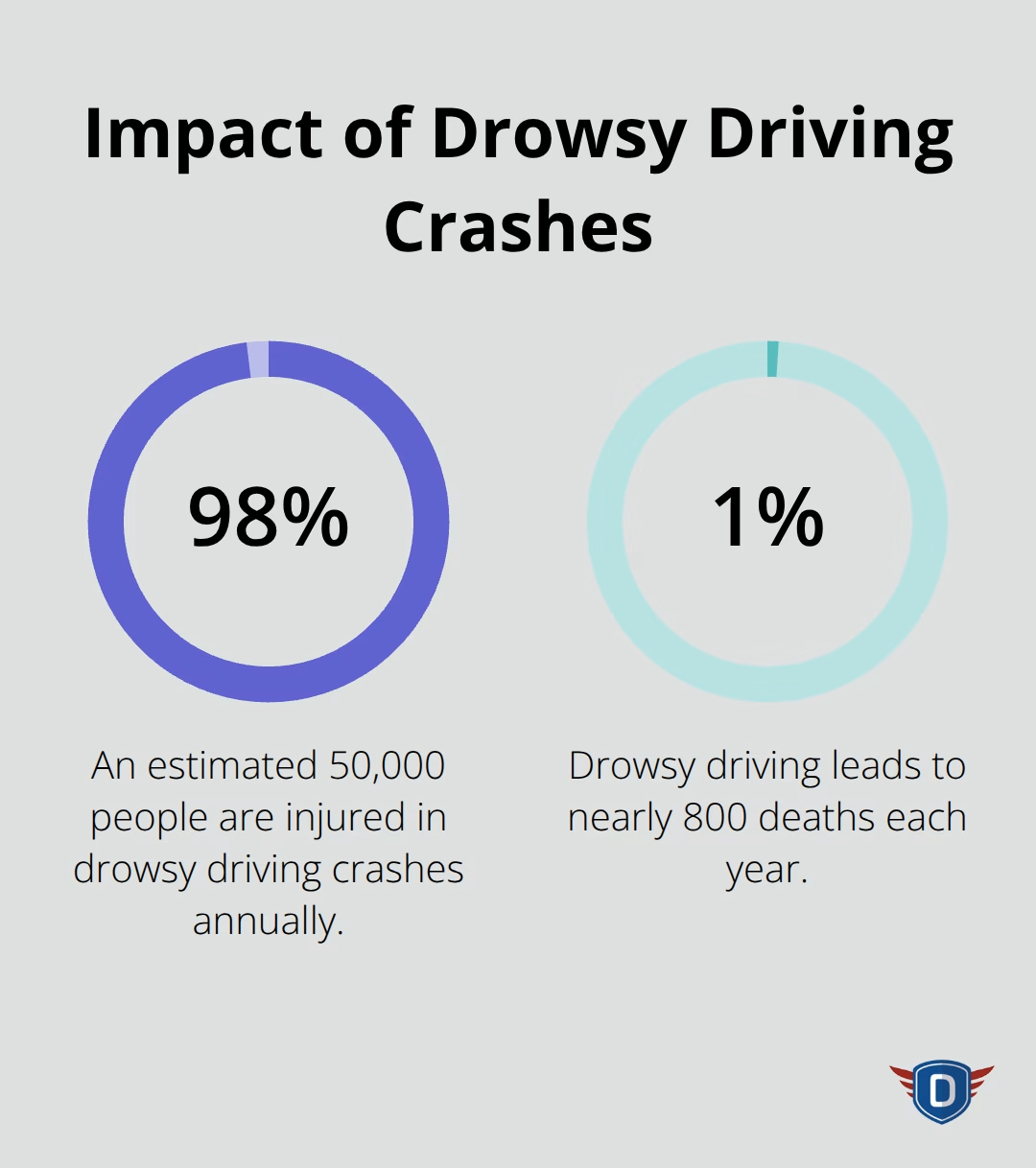
- Plan regular breaks on long trips (ideally every two hours or 100 miles).
- Recognize early signs of fatigue such as heavy eyelids or lane drifting.
- If drowsiness sets in, find a safe place to pull over and take a 15-20 minute nap.
- Avoid driving during your body’s natural sleep times, typically between midnight and 6 am.
Develop Advanced Situational Awareness
Situational awareness involves more than just watching other cars. It requires understanding the entire driving environment and anticipating changes. Some strategies to enhance this skill:
- Stay mentally engaged
- Practice active scanning
- Use the “What If?” technique
- Avoid distractions
- Learn defensive driving
These advanced techniques will prepare you to handle any situation the road presents, ensuring safer journeys for yourself and others. Many driving schools emphasize these skills in their defensive driving courses, including DriverEducators.com.
Final Thoughts
Defensive driving techniques require dedication and continuous improvement. You must maintain a safe following distance, scan your surroundings constantly, and anticipate potential hazards. Clear communication through proper signaling and checking blind spots will enhance your safety on the road, as will adjusting your speed for various weather and road conditions.
Advanced skills like smooth braking and acceleration, proper steering techniques, and escape maneuvers will further elevate your defensive driving abilities. You should manage fatigue and develop situational awareness for long-term safety behind the wheel. These techniques protect you and contribute to a safer environment for all road users.
Regular practice and conscious application of these skills in real-world driving situations are vital. You can take your skills to the next level by enrolling in a professional defensive driving course. At DriverEducators.com, we offer comprehensive driver education programs (designed to help you master these essential techniques).
